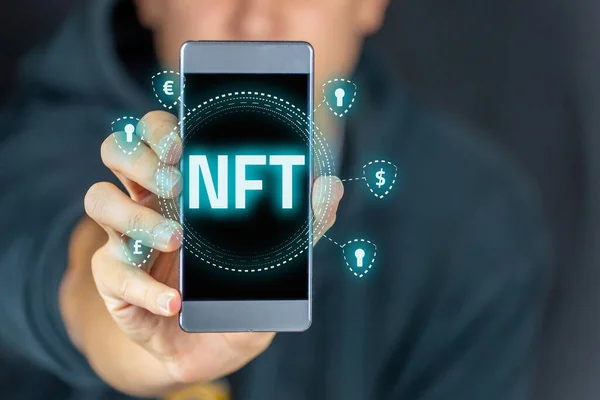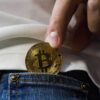Demystifying NFTs: Your Essential Beginner’s Guide
Unlocking NFTs: A Comprehensive Beginner’s Guide
Understanding NFTs: What Are Non-Fungible Tokens?
Non-fungible tokens (NFTs) are unique digital assets that use blockchain technology to establish ownership and authenticity. Unlike cryptocurrencies such as Bitcoin or Ethereum, which are fungible and can be exchanged for one another, NFTs are one-of-a-kind items that cannot be directly replaced with something else. This uniqueness makes NFTs ideal for representing ownership of digital art, music, virtual real estate, and other digital collectibles. Each NFT possesses distinct information and attributes encoded into it, thus ensuring that its provenance can be tracked on the blockchain.
The term “non-fungible” signifies that these tokens cannot simply be swapped for one another in a one-to-one manner. Imagine a trading card: while you can trade one card for another of equal value, no two cards are exactly alike. NFTs serve as the digital equivalent of these unique collectibles. They can hold varying values based on rarity, demand, and the reputation of the creator, making them an exciting yet speculative investment opportunity in the digital space.
For creators, NFTs offer a new way to monetize digital work. Artists, musicians, and content creators can sell their creations directly to fans without intermediaries, retaining greater control over their intellectual property. This has revolutionized the creative landscape, allowing individuals to capitalize on their work in ways that were previously unavailable.
As the digital landscape continues to evolve, understanding the fundamentals of NFTs is crucial. While the technology is still in its infancy, its implications for ownership, creativity, and commerce are already profound. This guide aims to demystify NFTs and provide insights into their potential uses and benefits for both creators and collectors alike.
The Evolution of Digital Art and NFTs’ Rise to Fame
The journey of digital art has been transformative, transitioning from a niche market to a mainstream phenomenon. Initially, digital artworks struggled to gain recognition and were often dismissed as less valuable than traditional art forms. However, the advent of NFTs has shifted this perception dramatically. The ability to tokenize digital art on blockchain has allowed artists to prove ownership and authenticity, thus elevating their works to a level of legitimacy comparable to that of traditional art.
The rise of NFTs gained momentum in 2021, culminating in several high-profile sales that captured global attention. One notable example is the sale of Beeple’s digital artwork, which fetched an astounding $69 million at a Christie’s auction. This landmark event not only underscored the potential value of digital art but also sparked a wave of interest in NFTs as a lucrative investment. As more artists and collectors embraced this new medium, platforms dedicated to NFT trading began to flourish.
Furthermore, the integration of NFTs into popular culture has created a vibrant community of creators and collectors. Social media platforms, particularly Twitter and Instagram, have become bustling marketplaces where artists showcase their work and connect with potential buyers. The democratization of art through NFTs has empowered creators from diverse backgrounds, allowing them to reach audiences that were once inaccessible.
The mainstream acceptance of NFTs has also prompted established institutions, such as museums and galleries, to explore how they can incorporate digital art into their collections. This evolution highlights a significant shift in how society perceives ownership and authenticity in the digital age, paving the way for future innovations in art and technology.
How to Create and Mint Your First NFT: A Step-by-Step Guide
Creating and minting your first NFT may seem daunting, but the process can be broken down into manageable steps. First, you’ll need a digital wallet that supports cryptocurrencies and NFTs. Popular options include MetaMask, Trust Wallet, and Coinbase Wallet. Once you have your wallet set up, fund it with cryptocurrency, typically Ethereum, to cover the transaction fees associated with minting your NFT.
Next, choose an NFT marketplace where you’ll create and sell your digital asset. Some of the most popular platforms include OpenSea, Rarible, and Mintable. Each marketplace has its own unique features and user interfaces, so it’s worth exploring a few to find the one that suits you best. Once you’ve selected a platform, follow the prompts to connect your digital wallet.
The next step is to create your NFT. You can upload various digital formats, including images, videos, music files, or even text. When creating your NFT, make sure to include an engaging title and description, as this information will help attract potential buyers. You also have the option to set royalties, allowing you to earn a percentage of future sales whenever your NFT changes hands.
After you finalize your creation, it’s time to mint your NFT. This process involves submitting your file to the blockchain, making it officially yours. Be prepared to pay a gas fee, which can vary based on network congestion. Once minted, your NFT is ready for sale or auction on the marketplace of your choice, marking your entry into the world of digital collectibles.
Navigating NFT Marketplaces: Where to Buy and Sell Tokens
NFT marketplaces are digital platforms where users can buy, sell, and trade non-fungible tokens. With numerous marketplaces available, it’s essential to understand the differences between them to choose the right one for your needs. Some of the most popular marketplaces include:
- OpenSea: One of the largest NFT marketplaces, OpenSea offers a wide range of digital assets, including art, music, and virtual real estate.
- Rarible: This decentralized marketplace allows creators to mint and sell their NFTs while also earning royalties on future sales.
- Foundation: A curated platform focused on high-quality art, Foundation emphasizes community-driven content and invites artists to participate.
When buying or selling NFTs, it’s crucial to conduct thorough research. Take note of the platform’s fees, supported blockchains, and the types of assets available. Additionally, familiarize yourself with the process of bidding, buying, and selling on your chosen marketplace to avoid common pitfalls.
Many marketplaces also feature social components, allowing users to follow their favorite creators, like their artworks, and engage with the community. This interaction can enhance your experience as both a buyer and seller and provide opportunities for networking within the NFT space.
Finally, always prioritize security when navigating NFT marketplaces. Ensure that your digital wallet is secure, utilize two-factor authentication when available, and be cautious of scams. By staying informed and vigilant, you can confidently engage in the vibrant marketplace of digital assets.
The Role of Blockchain in Ensuring NFT Authenticity
Blockchain technology serves as the backbone of the NFT ecosystem, providing a decentralized and transparent ledger that records ownership and transaction history. Each NFT is linked to a unique identifier stored on the blockchain, ensuring that it cannot be duplicated or forged. This level of security is essential for establishing trust between buyers and sellers in the digital marketplace.
When an NFT is created or “minted,” a smart contract is generated on the blockchain. This contract contains crucial information about the NFT, including its creator, ownership history, and any royalties set by the artist. As the NFT is bought and sold, the blockchain automatically updates this information, allowing anyone to verify its authenticity and provenance with ease.
The transparency offered by blockchain technology also benefits artists, as it allows them to track the sales of their work and receive royalties from secondary sales. This feature not only incentivizes creators to produce more work but also establishes a sustainable economic model for digital artists.
Furthermore, the decentralized nature of blockchain mitigates the risk of censorship and fraud. Unlike traditional art markets, where intermediaries may exert control over transactions, NFTs operate on a peer-to-peer basis. This shift empowers artists and collectors alike, fostering a more equitable marketplace for digital assets.

Future Trends: What’s Next for NFTs and Digital Collectibles?
The future of NFTs and digital collectibles holds immense potential, with numerous trends set to shape the landscape. One significant development is the integration of NFTs into the metaverse, a collective virtual shared space that blurs the lines between physical and digital realities. As virtual worlds gain popularity, NFTs will play a crucial role in representing ownership of digital assets, allowing users to showcase their collections in immersive environments.
Another trend to watch is the rise of utility-based NFTs, which go beyond mere collectibles. These NFTs offer additional benefits, such as access to exclusive content, events, or experiences. For instance, some artists are creating NFTs that serve as tickets to virtual concerts, providing fans with unique opportunities to engage with their favorite creators. This intersection of art and utility will likely redefine how NFTs are perceived and valued.
The gaming industry is also poised to embrace NFTs. Game developers are exploring ways to incorporate blockchain technology into their titles, allowing players to own, trade, and sell in-game assets. This shift towards decentralized gaming experiences can empower players and create new revenue streams for developers.
Lastly, regulatory developments will significantly impact the NFT market. As governments around the world grapple with how to classify and regulate digital assets, creators and collectors must stay informed about potential legal implications. The evolving landscape of NFT regulations will undoubtedly shape the future of this burgeoning industry.
Comparison Table: Popular NFT Marketplaces
| Marketplace | Blockchain Supported | Fees | Focus Area |
|---|---|---|---|
| OpenSea | Ethereum, Polygon | Varies (2.5% fee) | General, wide range |
| Rarible | Ethereum | Varies (2.5% fee) | Community-driven, art |
| Foundation | Ethereum | 15% commission | Curated digital art |
In conclusion, NFTs represent a revolutionary shift in digital ownership, transforming how creators and collectors interact with art and other digital assets. By understanding the intricacies of NFTs, individuals can navigate this dynamic landscape and unlock the potential of digital collectibles.
Posts not found
Sorry, no other posts related this article.








Museums are now looking at digital art because of NFTs. Interesting change!
I learned that NFTs can’t be swapped like Bitcoin. They are one-of-a-kind!
NFTs have made digital art valuable. I never knew about Beeple’s $69 million sale!
Digital art is now respected thanks to NFTs. This is good for artists!
NFTs are unique digital items on blockchain. Good for owning digital art!
You need Ethereum to mint NFTs. Good to know about different marketplaces too.
The guide on creating and minting NFTs seems helpful. Need a digital wallet first.
Great explanation of how NFTs prove ownership and authenticity.
NFTs help artists sell work directly to fans without middlemen.
NFTs allow artists to reach more people and make money in new ways.